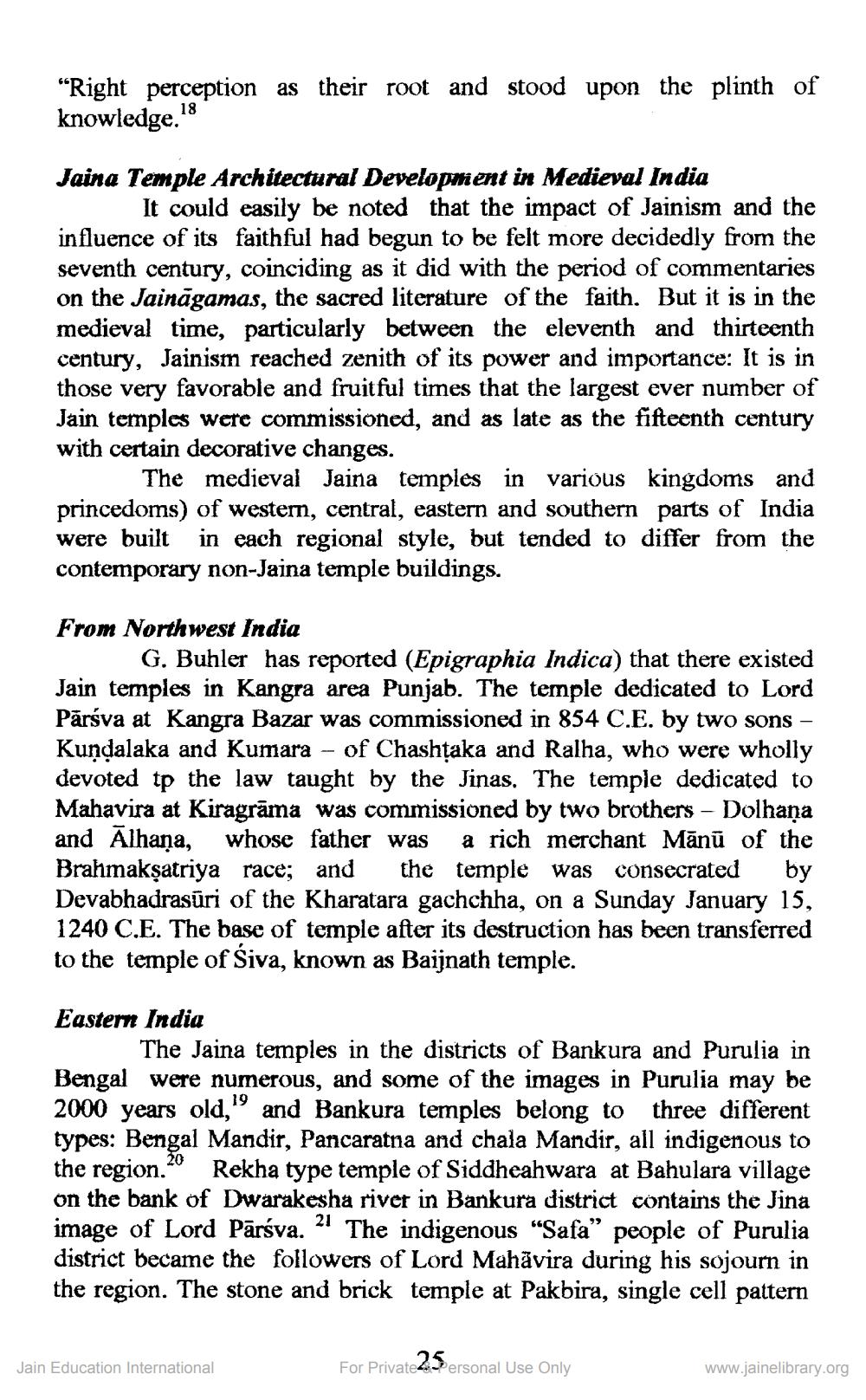________________
“Right perception as their root and stood upon the plinth of knowledge. 18
Jaina Temple Architectural Development in Medieval India
It could easily be noted that the impact of Jainism and the influence of its faithful had begun to be felt more decidedly from the seventh century, coinciding as it did with the period of commentaries on the Jaināgamas, the sacred literature of the faith. But it is in the medieval time, particularly between the eleventh and thirteenth century, Jainism reached zenith of its power and importance: It is in those very favorable and fruitful times that the largest ever number of Jain temples were commissioned, and as late as the fifteenth century with certain decorative changes.
The medieval Jaina temples in various kingdoms and princedoms) of western, central, eastern and southern parts of India were built in each regional style, but tended to differ from the contemporary non-Jaina temple buildings.
From Northwest India
G. Buhler has reported (Epigraphia Indica) that there existed Jain temples in Kangra area Punjab. The temple dedicated to Lord Pārsva at Kangra Bazar was commissioned in 854 C.E. by two sons - Kundalaka and Kumara - of Chashtaka and Ralha, who were wholly devoted to the law taught by the Jinas. The temple dedicated to Mahavira at Kiragrāma was commissioned by two brothers - Dolhana and Alhaņa, whose father was a rich merchant Mānū of the Brahmaksatriya race; and the temple was consecrated by Devabhadrasūri of the Kharatara gachchha, on a Sunday January 15, 1240 C.E. The base of temple after its destruction has been transferred to the temple of Siva, known as Baijnath temple.
Eastern India
The Jaina temples in the districts of Bankura and Purulia in Bengal were numerous, and some of the images in Purulia may be 2000 years old," and Bankura temples belong to three different types: Bengal Mandir, Pancaratna and chala Mandir, all indigenous to the region. Rekha type temple of Siddheahwara at Bahulara village on the bank of Dwarakesha river in Bankura district contains the Jina image of Lord Pārsva. 21 The indigenous “Safa” people of Purulia district became the followers of Lord Mahāvira during his sojourn in the region. The stone and brick temple at Pakbira, single cell pattern
Jain Education International
For Privateersonal Use Only
www.jainelibrary.org




